Sooner Routhier – Limitless Light
Posted on April 5, 2022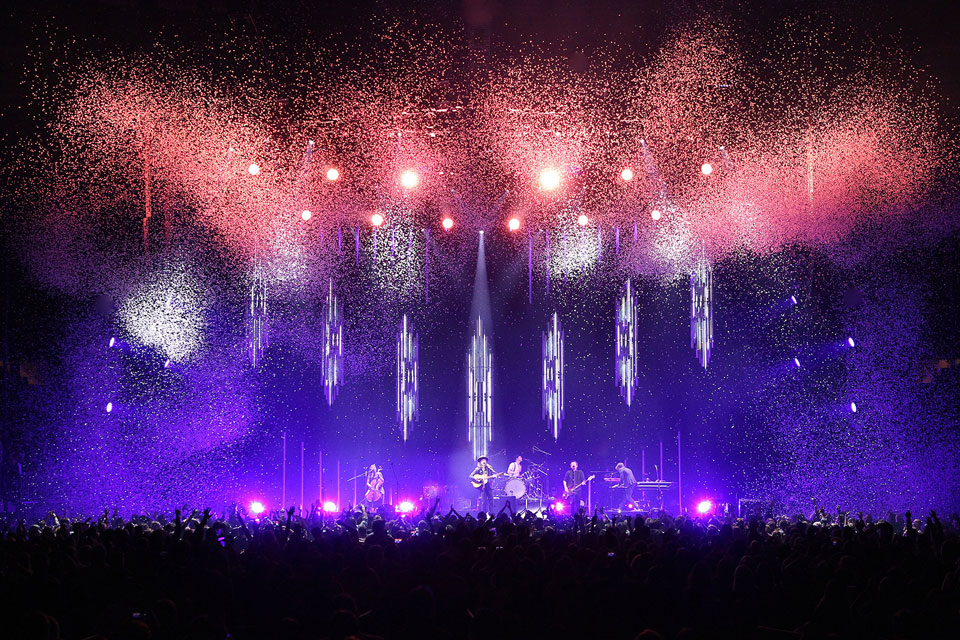
Photo: Todd Kaplan
Very early in her career, this Parnelli Award winning designer found herself standing alone in the middle of a 120k par can rig at a small festival. The person who was supposed to help her was a no-show because of illness, leaving her to set up and patch the rig on her own. Uncertain of her ability to do this as an unaided newbie, she felt panic sink in. Ultimately, she rallied herself and completed the project, earning praise from her client.
Sooner Routhier hasn’t looked back since. Just as she did at that early festival, she has continued to embrace challenges and push herself in new directions, both in terms of design concepts and the course of her own career. In keeping with this outlook, she refused to recognize artificial boundaries between lighting and production. Both are inexorably linked together in the audience’s experience, so why shouldn’t they drive one another?
The position of “Production Designer” scarcely existed at the start of Routhier’s career. But following her vision, she came to embrace this role for herself in addition to being a lighting designer. In the years since, she has worked on an impressive array of shows in a variety of different capacities for clients like Coldplay, The Weeknd, KISS, Imagine Dragons, Rihanna, Depeche Mode, Motley Crue and more. Taking a break from her busy schedule, she shared her insights into the limitless world of design.
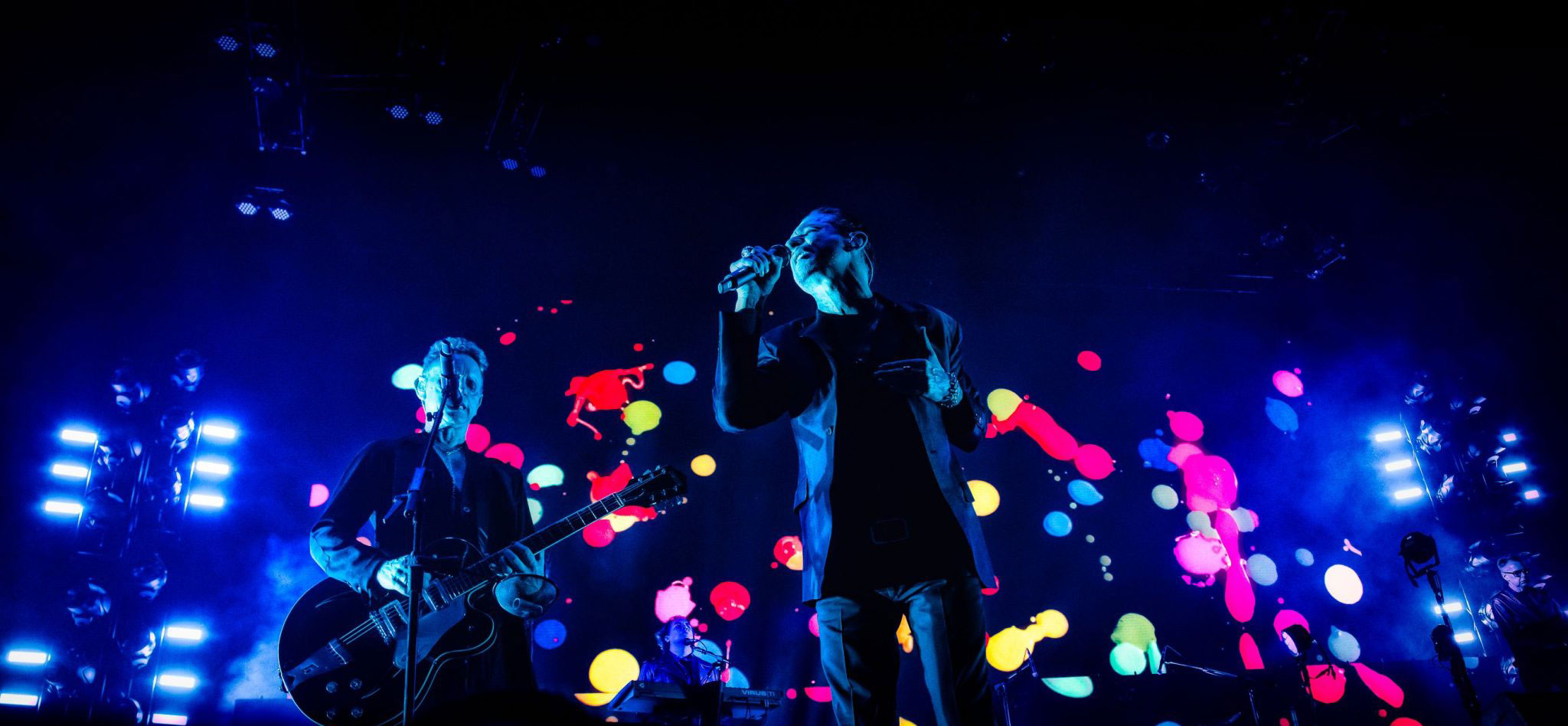
Photo: Todd Moffses
We’ve always been impressed by the geometry you bring to the stage. Thinking particularly of some of your work for The Weeknd. How does this architecture of light contribute to the impact of a design?
“When I’m working with a Creative Director or Scenic Designer, as was the case with The Weeknd, I collaborate directly with them to make sure I’m highlighting the architecture of the show with light appropriately. In the case of The Weeknd, Es Devlin created a striking, geometric shape for me to play with. It was very evident what lines needed to be followed with light after having numerous discussions with her.
“In the case of my own production designs, I typically try to create scenic pieces that become their own lighting elements on stage. It could be something outlined in LED. Or something that simply needs to have an up light to highlight its depth.”
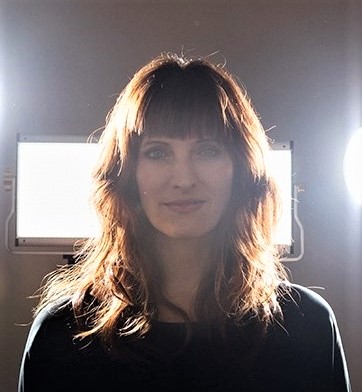 Automation is another design element that you’ve excelled at. When you introduce automation to a design, does it change the way you use lighting?
Automation is another design element that you’ve excelled at. When you introduce automation to a design, does it change the way you use lighting?
“Yes, absolutely! It complicates the process greatly. When things move, they sometimes get in the way of follow spots and other lighting elements. It also means that you end up having more focus positions as pan and tilt values change greatly when you move a hanging position. Sometimes, when you want to see the movement of a set element, you must add more lighting fixtures for the explicit purpose of highlighting that movement.”
We know you like to listen to a client’s music before starting a design process, but besides the music, are there other things about a client that might influence how you approach the design of a show?
“The first step in my process is research. I try to listen to the music as much as I can, as you stated. I also pour through social media, YouTube, websites, and so forth. I try to figure out as much as I can about the creative past and present of artists, so that I can design their future show. Once research is complete, I speak to them or their creative director about what the overall vision is. I always try to do this through Zoom or in person. Hand gestures and body language are an important thing to read when learning about your artists during creative discussions.”
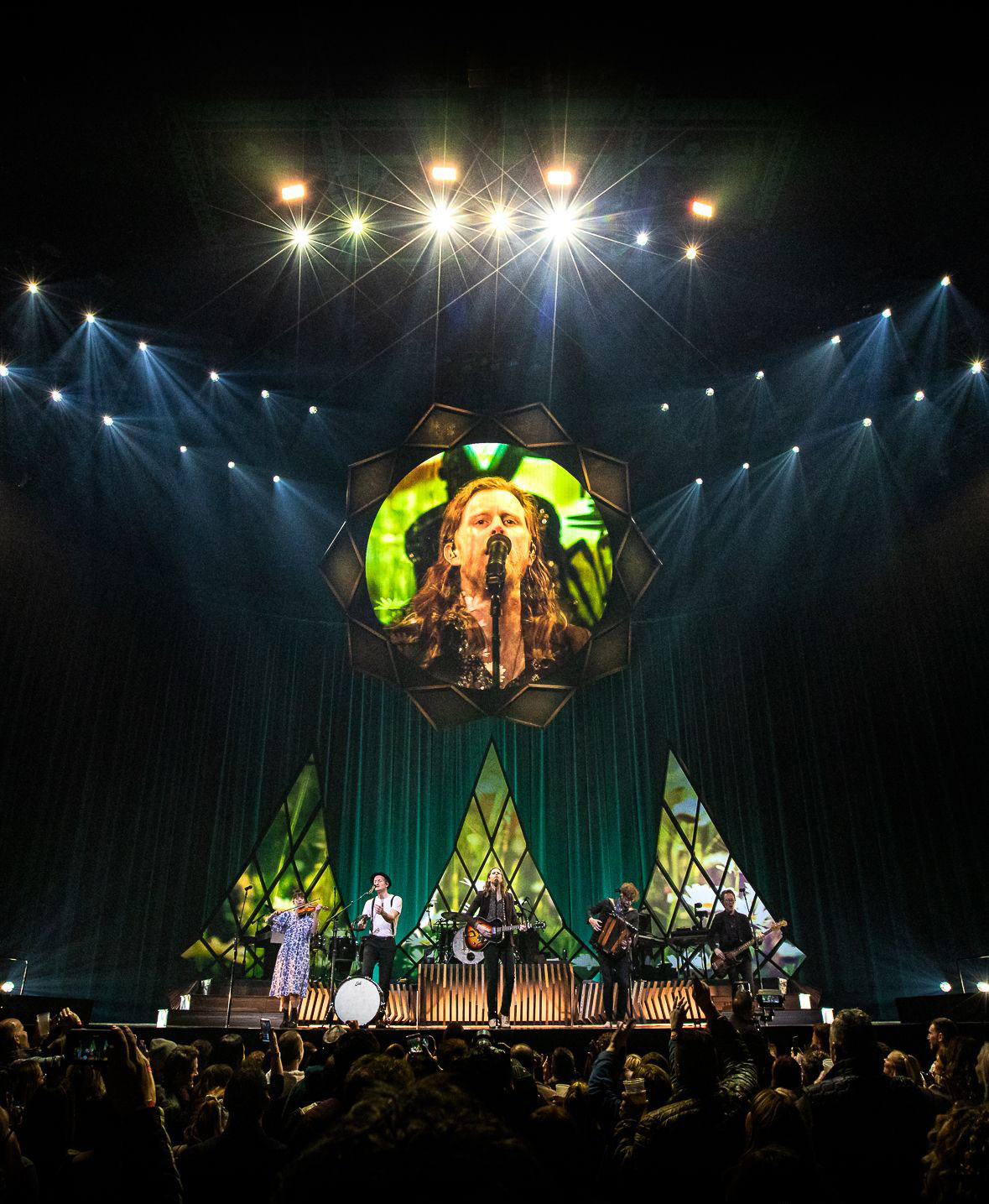
Photo: Todd Moffses
In much of your work, you seem to limit yourself to using only a few colors at a time. Is this an accurate assessment? What are your thoughts on this subject?
“This very much depends on the artist. Most of the time, I try to use only two colors plus a neutral in songs. I think it keeps the stage clean. It’s completely dependent on the music though. There are other artists I work with that do really well with multiple colors in a song. I just try to use them in an organized fashion.
In some of your work, such as your designs for Halsey, you use the entire stage, vertically and horizontally, to create a theatrical background for the artist. Are tour designs becoming more theatrical?
“I believe that tour designs have always been somewhat theatrical in nature. Afterall, most, if not all, our technology originated in the theater. I’m not sure if tour designs are becoming more theatrical. I do believe that we are pushing boundaries that create more spectacle. I also believe that younger audiences want to see and experience a show; something that is interactive and takes them through various emotions.”
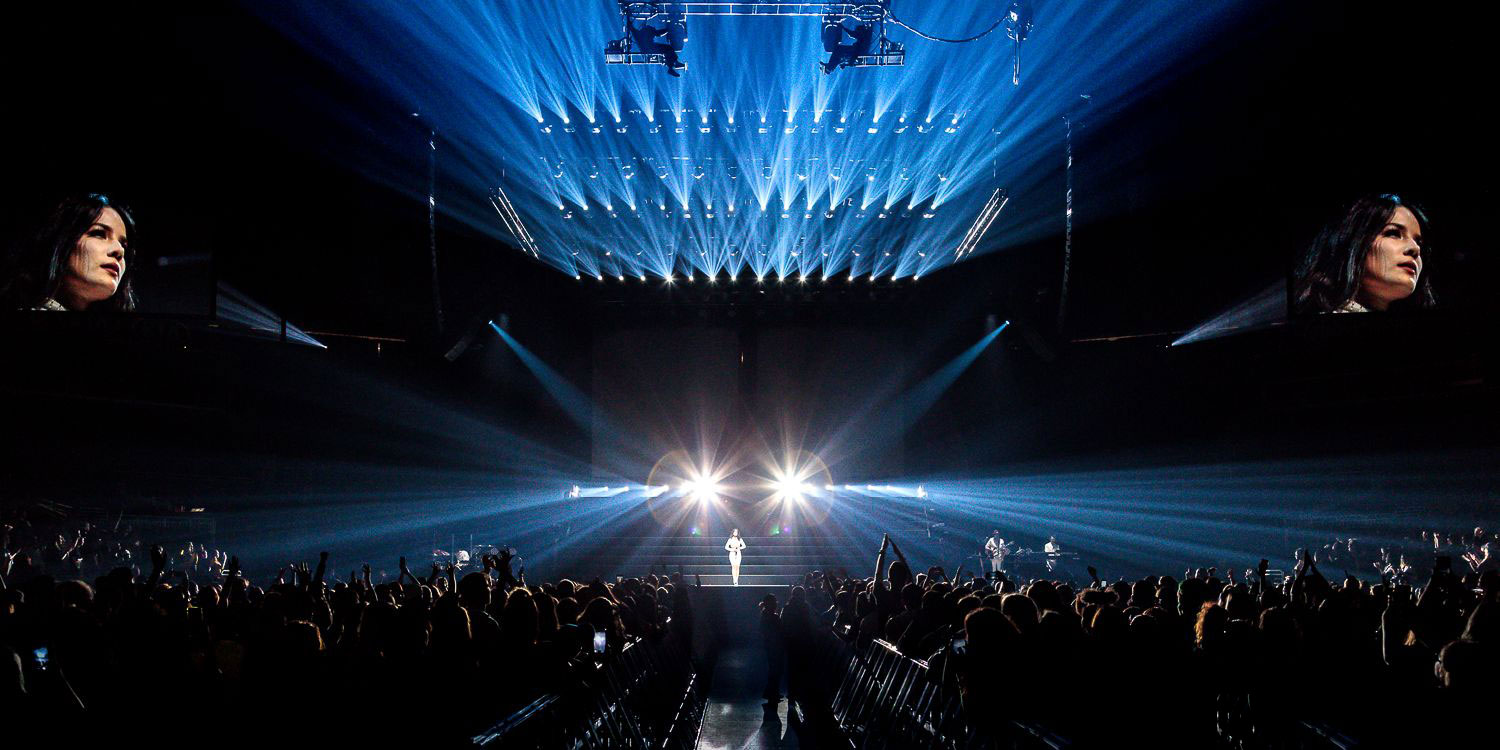
Photo: Todd Moffses
Was there one project you did that marked a seminal moment in your career?
“My second year in the business, I was sent to set up and tech a 120k par can rig for a small music festival. I thought I would have a helper that day, but the person set to help me was sick and couldn’t make it, if I remember correctly. I certainly wasn’t ready to set up, patch, and tech the rig on my own at this point. I remember being so upset that I couldn’t get the rig patched correctly that I cried in a corner. Yes, I cried in a corner. But then I stopped, thought about the task at hand, and completed the job. The lighting designer was very happy with the results in the end. I realized at that moment that I couldn’t feel sorry for myself. I just had to stop and take a breath, think clearly, put my head down and do the work.”
As your career has progressed you’ve gotten more involved in full production rather than just lighting design. What challenges were involved in this transition?
“When I first started in the business, the role of “Production Designer” didn’t really exist. It was typically the lighting person overseeing the entire show creative for an artist. I started in the business with my sights set to design an entire stage for an artist. Not just the lights. I always envisioned some sort of scenic when I created a lighting design.”
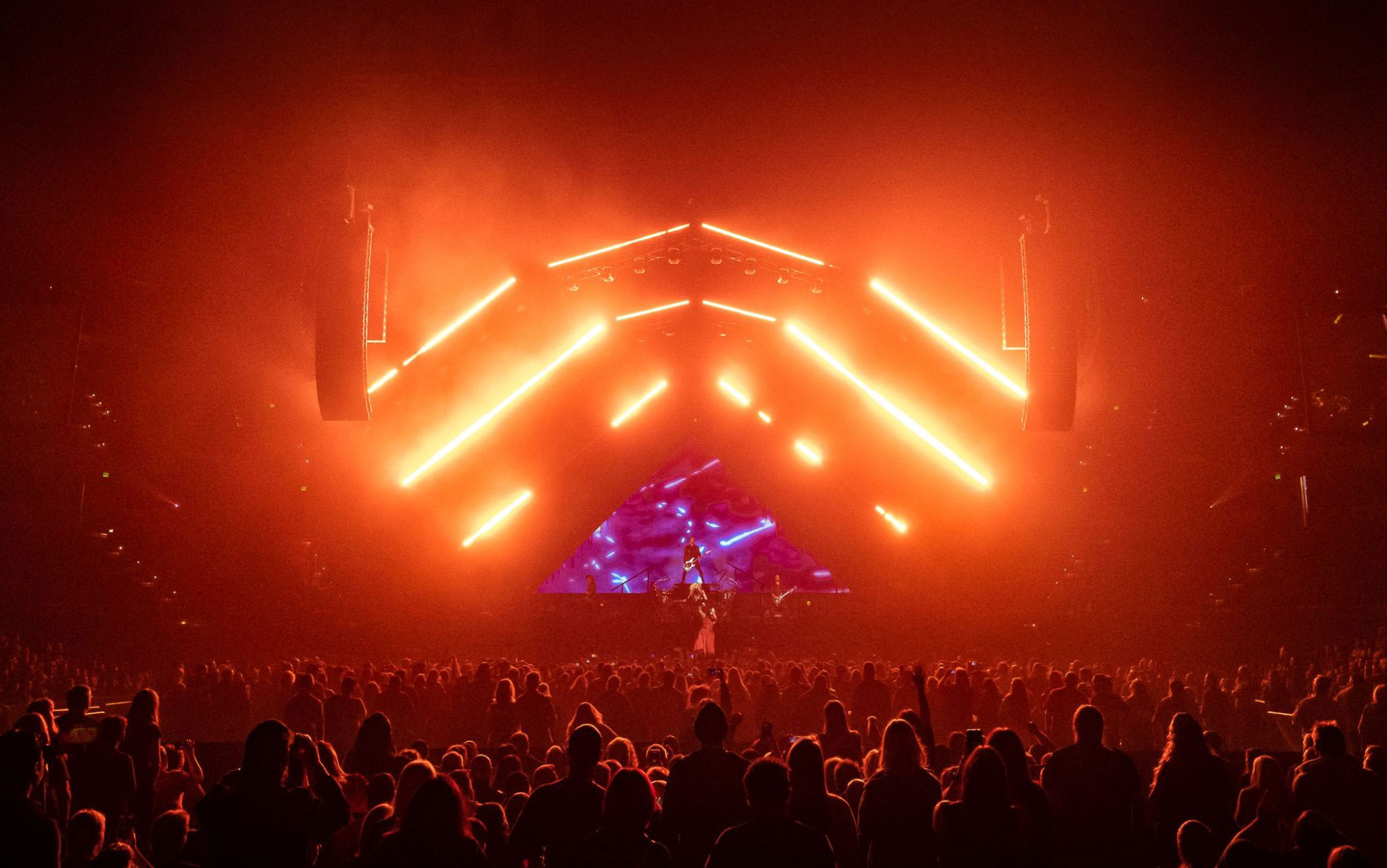
Photo: Todd Moffses
Does your involvement in full production give you a different perspective on lighting design?
“I’ve always viewed the stage and production jointly. Not just as subject matter to light. The lighting and production design drive each other equally. I gain different perspectives on design as I walk down the street, watch movies, go to art galleries, shop in stores, and study architecture and interior design on social media and in my travels.”
You mentioned the fusion of lighting and production in design. That, of course, typically involves close collaboration among creatives. Any advice on how to make collaborations work?
“Collaborations are paramount in my process. I’m a firm believer that you achieve the best results when you work as a team to complete a vision. All ideas are always welcome. Sometimes they might not be used! But those ideas spur discussions that lead to amazing things.”
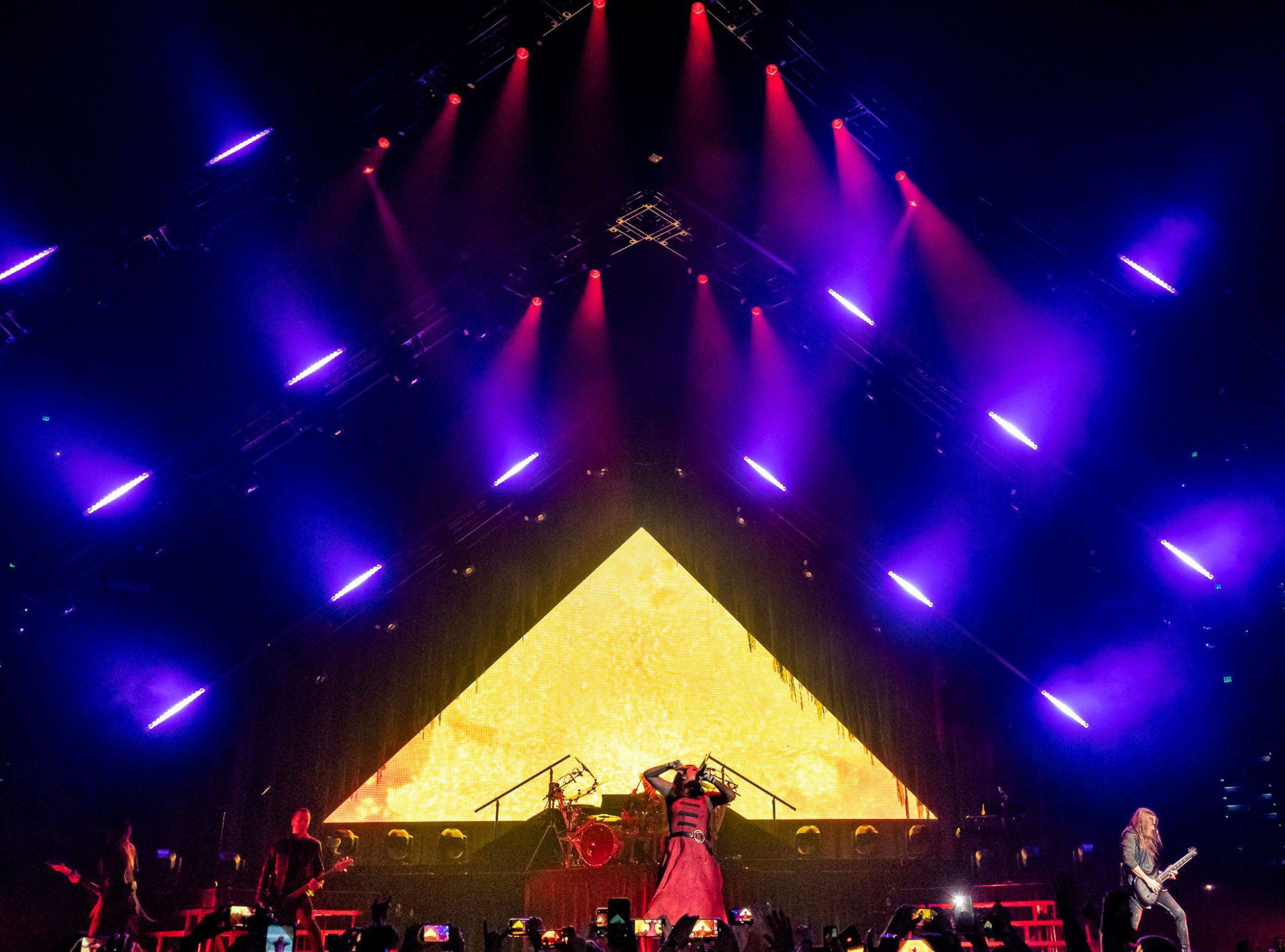
Photo: Todd Moffses
You’ve been in design for about 20 years now. How is this industry different from when you started?
“Technology is the biggest, most obvious change. I’m amazed at the things you can do with LED now. We’ve come a long way since the first color rendering LEDs entered the scene back in the late 90s and early 2000s! It also seems like there are new departments popping up. You can now enter the touring road as an expert in IT! It’s fun to see the progression.”
There weren’t nearly as many women involved in design when you started. How have attitudes toward women designers changed?
“I’ve honestly had an easy go as a woman in the industry. I recognize that there are indeed women who have struggled and continue to struggle on the road. I was blessed with amazing men that guided my way and mentored me along the way. I think if anything, attitudes have gotten better. I see a lot more women in the industry and makes me so damn proud.”
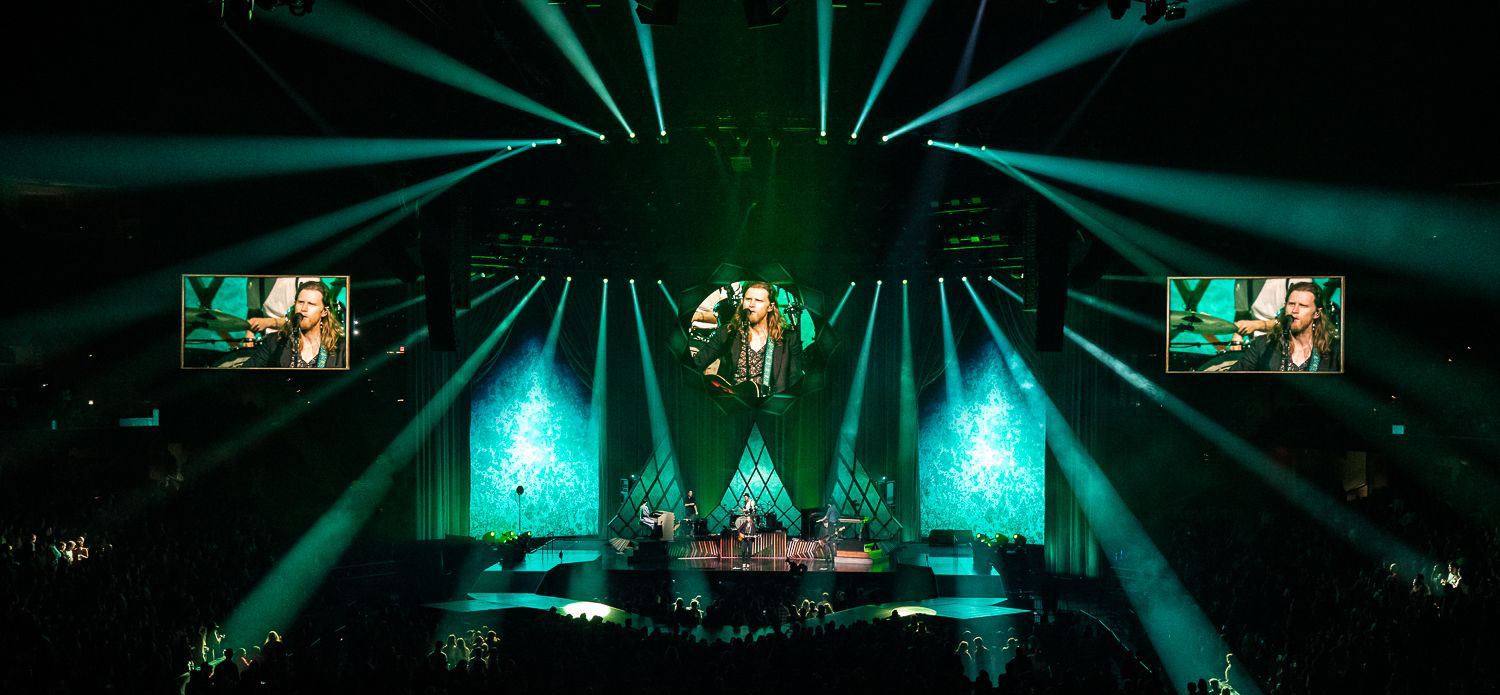
Photo: Todd Moffses
At this point in your career, you are no longer running consoles. Is there anything you miss about that?
“I still get behind the console occasionally, but that being said, I miss being able to lose myself in programming a tour. It’s fun to run the lighting rig through its paces after staring at it on paper for so long. These days there are too many distractions with conference calls, emails, and logistics to figure out. Every so often, I try to put my phone in airplane mode and program a bit of a tour. It’s a very necessary and welcome escape! But as I answer this, I can see some of my favorite programmer collaborators rolling their eyes!”
You were raised in northern Vermont. Did the beautiful environment there influence your development as a designer?
“Vermont is beautiful! I think I was more influenced by my family and my teachers. My mom was a seamstress and always kept me occupied with crafts and sewing. My grandfather filled our family gatherings with music on his accordion. My dance teacher, Cheri Skurdall pushed me to try theater lighting and it became an instant love. I think I was more influenced by the people in Vermont than I was the environment.”
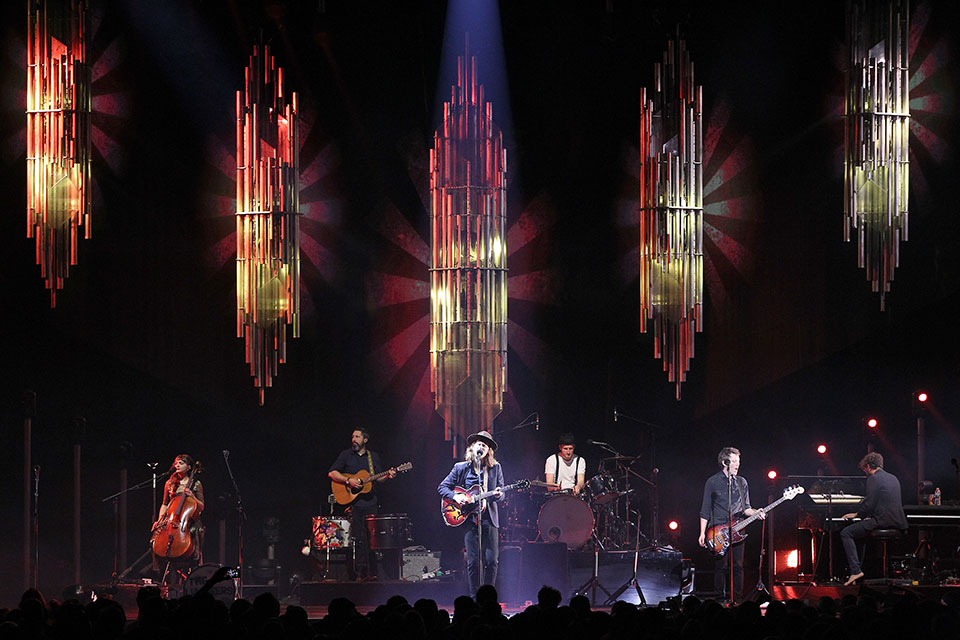
Photo: Todd Kaplan
How would you like to be remembered as a designer?
“It’s not important for me to be remembered particularly. I would rather be an influence to help build a stronger, more diverse generation of designers in the industry.”
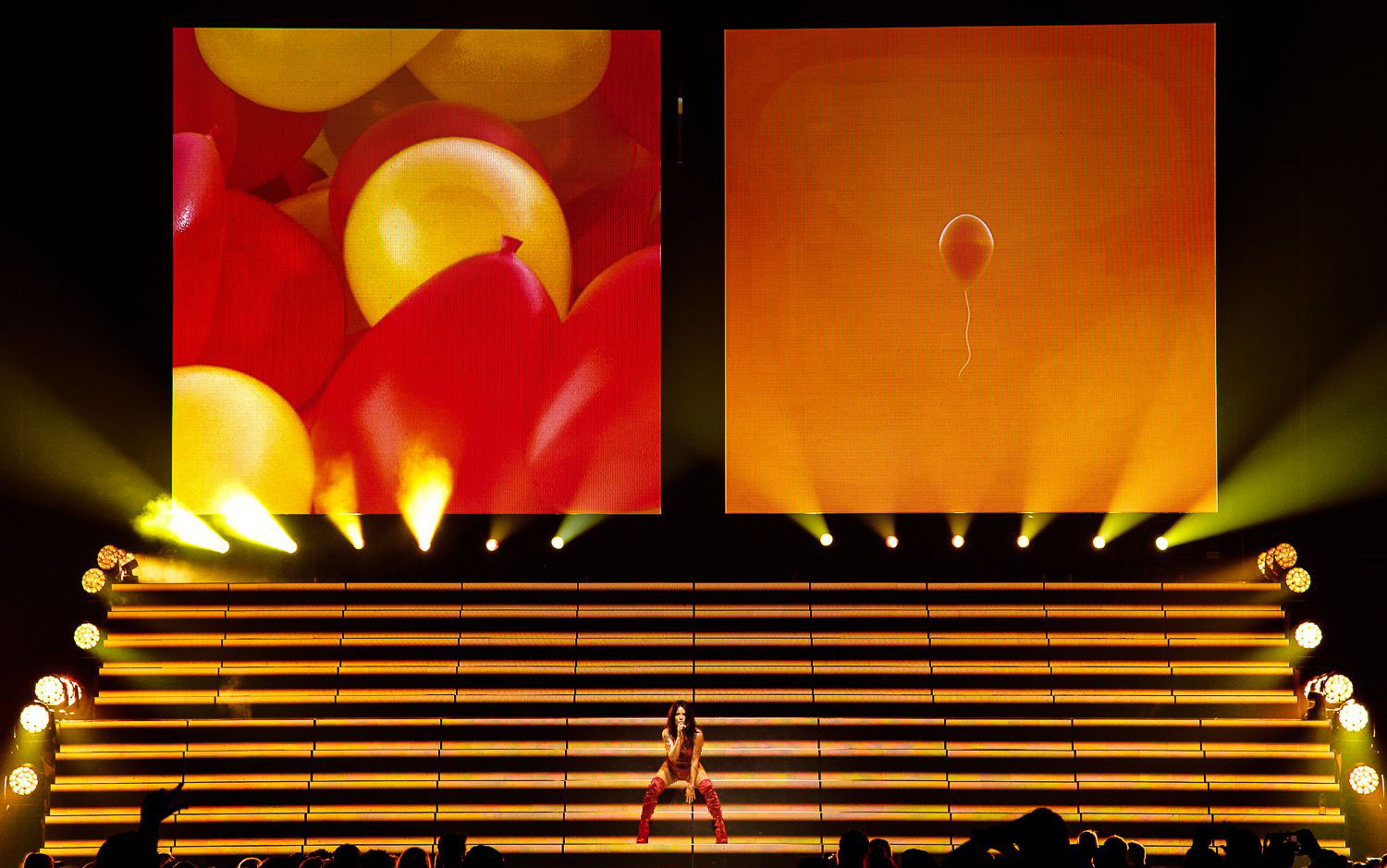
Photo: Todd Moffses